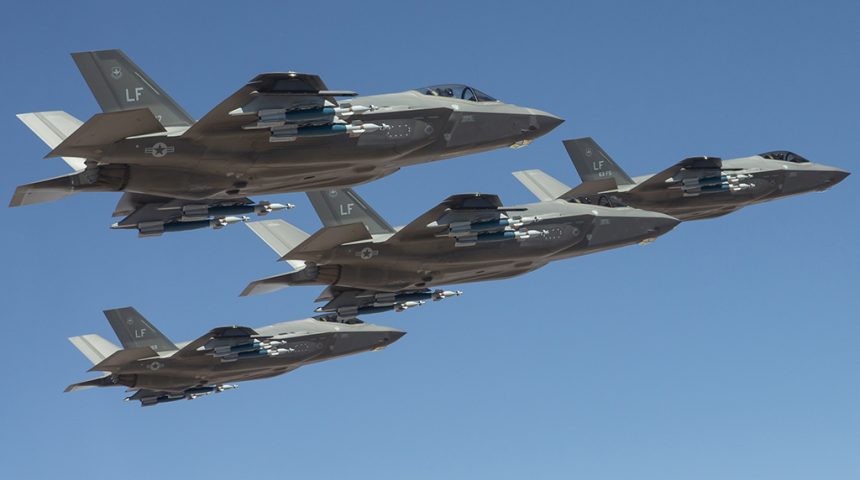This was the first time Luke AFB launched a four-ship with both internal and external weapons, a configuration known as “Beast Mode”.
“Beast Mode” is not an official or technical term. At least not within the U.S. Air Force. However is a pretty common way an F-35 configuration involving both internal and external loads is dubbed. Actually, others call any configuration involving external loads “Bomb Truck” or “Third Day of War” configuration.
In fact, as opposed to a “First Day of War” loadout, in which the F-35 would carry weapons internally to maintain low radar cross-section and observability, the “Third Day of War” configuration is expected to be used from the third day of an air campaign when, theoretically, enemy air defense assets (including sensors, air defense missile and gun systems and enemy aircraft) have been degraded by airstrikes (conducted also by F-35s in “Stealth Mode”) and the battlespace has become more permissive: in such a scenario the F-35 no longer relies on Low-Observability for survivability so it can shift to carrying large external loads. These conditions are not always met. For instance, LO was not needed when the F-35A was called to carry out the first air strike in the Middle East, nor when the U.S. Marine Corps F-35B carried out the first air strike in Afghanistan.
Anyway, in “Beast Mode“, exploiting the internal weapon bays, the F-35 can carry up to 2x AIM-9X (pylons), 2x AIM-120 AMRAAM (internal bomb bay) and 4x GBU-31 2,000-lb (pylons) and 2x GBU-31 PGMs (internal bay). However, the loadout can be different, with lighter GBU-32s or GBU-12 500-lb LGB (Laser Guided Bombs) as shown in the following table:

“Panther Beast” is a competition organized by 63rd Fighter Squadron at Luke Air Force Base, Arizona, on Aug. 27, 2019. The name comes from the 63rd’s nickname (“Panther”) and the fact that missions were flown in “Beast Mode”.
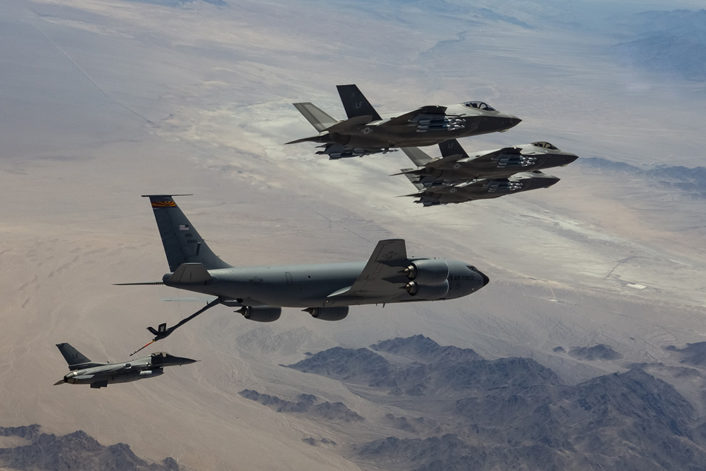
“The competing pilots flew 50 miles to acquire and destroy 6 to 12 targets over a 45-minute period in hopes of becoming the winners of ‘Panther Beast’,” said Lt. Col. Curtis Dougherty, 63rd Fighter Squadron commander, in a Luke AFB release.
“After landing, the tape review will reveal the truth, and we’ll celebrate the victors at a fighter squadron and aircraft maintenance unit awards ceremony,” said Dougherty.
There were 4 aircraft involved in the competition dropping 24 GBU-12s. Noteworthy, this was the first time Luke AFB launched a four-ship with both internal and external weapons.
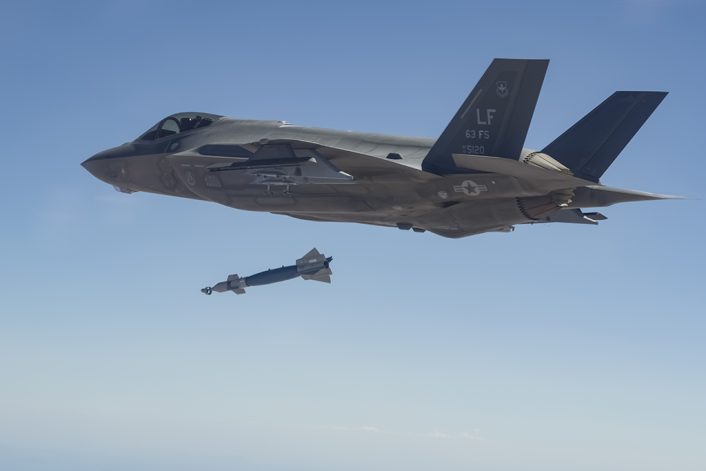
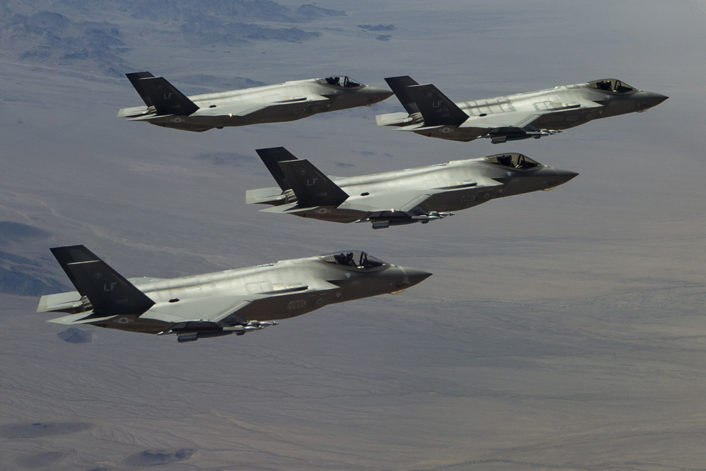
That said, “Panther Beast” was not only about flying the F-35As to the target area and drop the bombs: it was a joint effort that involved airmen from multiple units working together to build the munitions used, maintain the aircraft and fly the jets.
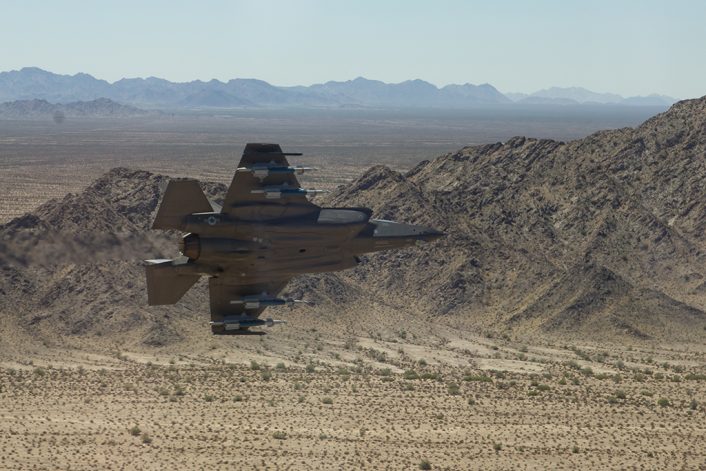
Dougherty said it was their cooperation that made the competition possible.
“The work started weeks before weapons hit targets,” he said. “Our AMU has been hard at work loading aircraft with external pylons that we’ve never flown with before at Luke. Ammo has spent countless hours building more weapons than we’ve ever dropped in this squadron’s history. The pilots have spent that time planning: determining which targets and attacks will challenge the squadron’s instructors and ensuring everyone has the knowledge requisite to succeed. On the day of the mission, it all comes together.”
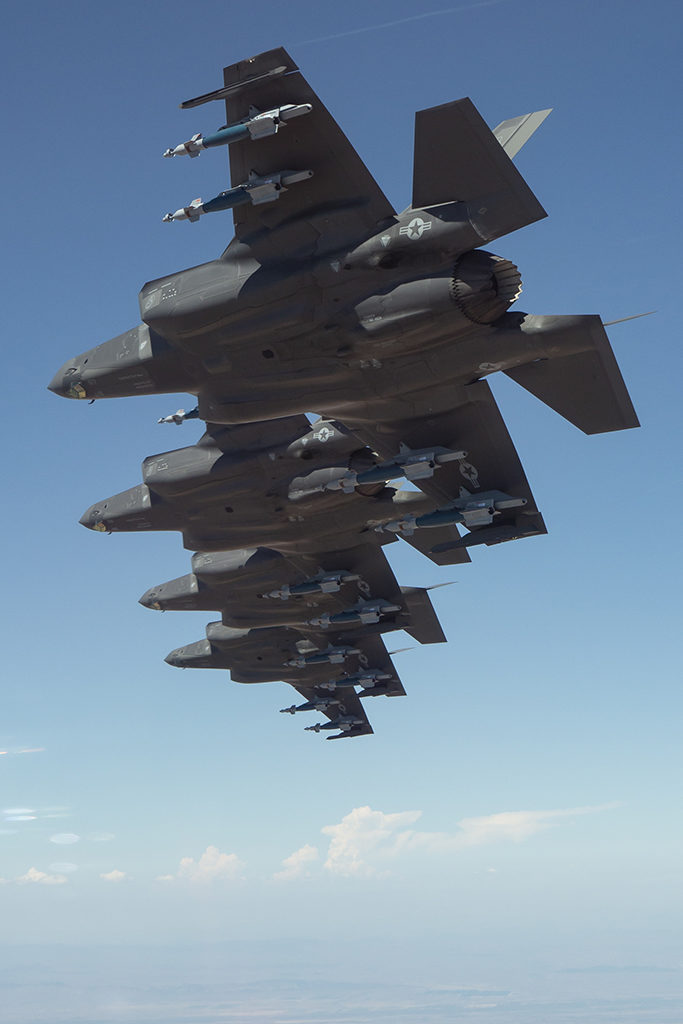
While the competition is a special event, maintenance, ammo and pilots work together to perform these tasks frequently. Dougherty said, it’s this synergy that allows our Air Force to be an effective fighting force.
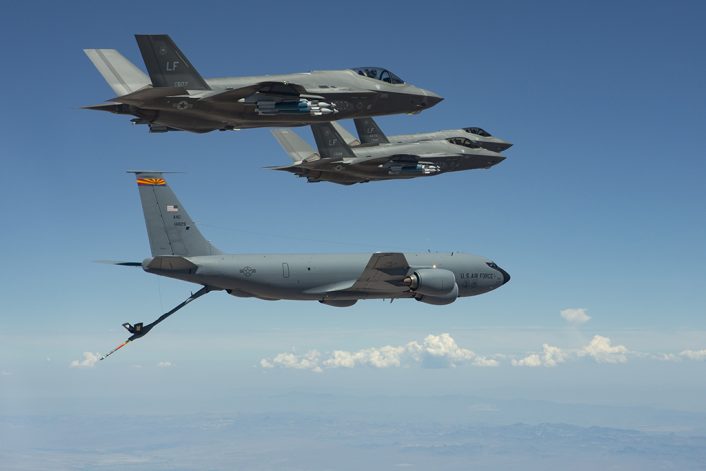
“Panther Beast” was also an opportunity to take some stunning photographs of the aircraft transitioning to the target area, refueling and dropping bombs, like those you can find in this post, taken by Lockheed Martin’s Matt Short.
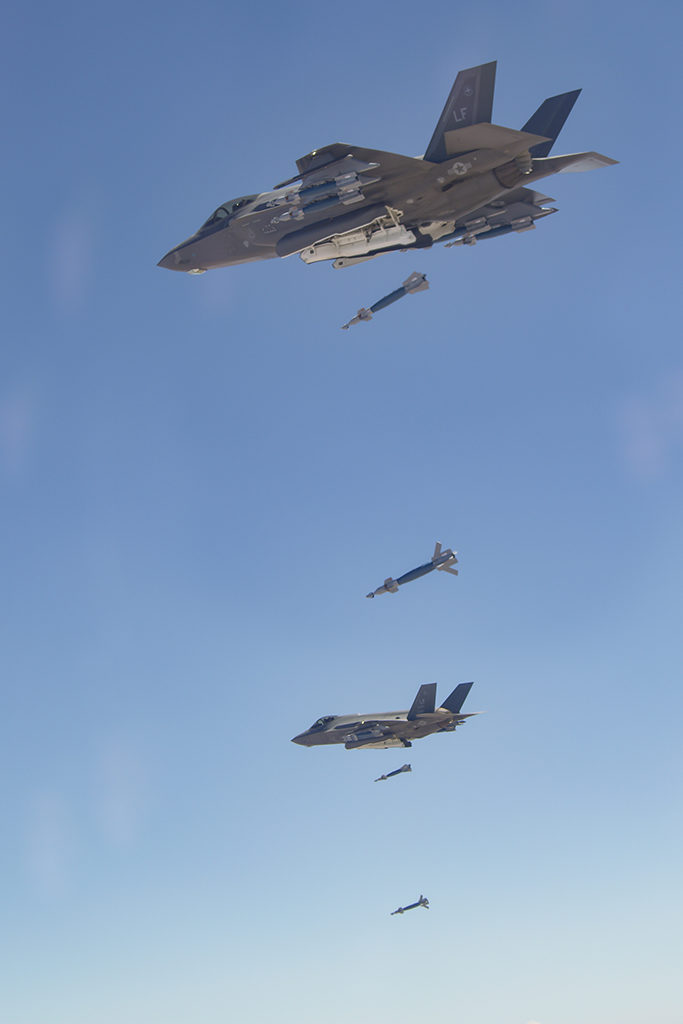
Luke AFB is the training hub for Lightning II’s pilot and maintainers from Australia, Norway, Italy, the Netherlands, Japan and Israel. F-35 pilot training began at Luke just over a year after the 56th Fighter Wing received its first F-35A in 2014. According to LM, eventually, the 56th Fighter Wing will be home to 144 F-35s in the future.
The 63rd FS is one of the three dedicated F-35 training squadrons at Luke (the other being the 61st and 62nd FS).

